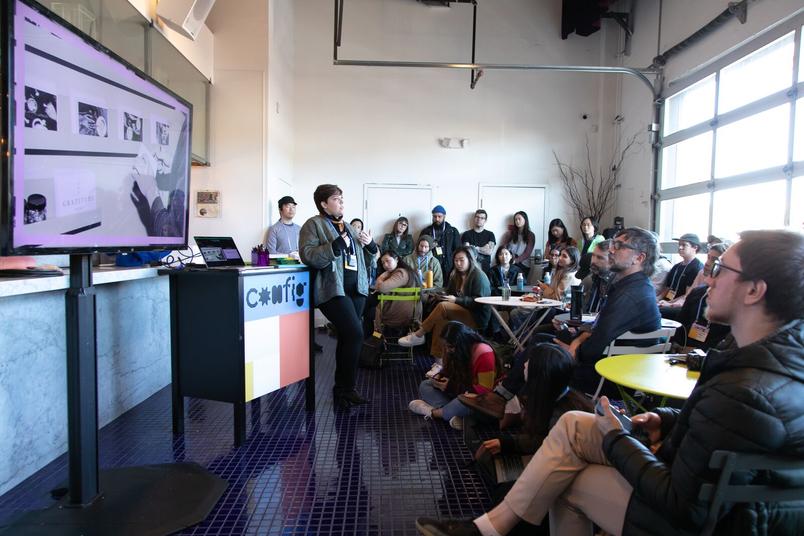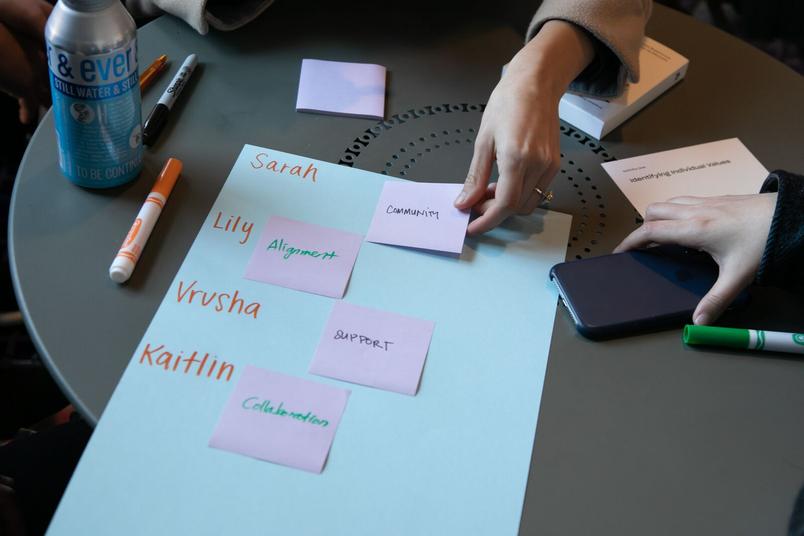The Dropbox guide to building creative culture


Learn how the design team at Dropbox builds creative culture. Get the Team Values Toolkit, along with tips for running the exercise with your team.
There’s a lot of talk about culture, and for good reason. Beyond boosting team happiness, a great culture can foster a sense of belonging, make a company an attractive place to work, and help employees deliver successfully on business goals. Whether intentionally or not, culture impacts everything from employee engagement, to how fast your product ships, to how well your company maintains a healthy bottom line.

Culture, explained
As a design program manager, I’ve built a career shaping processes and culture, and I’ve learned that these factors can make or break a team’s ability to innovate and ship great work. The challenge is that culture often feels intangible, and it’s tough to influence if you don’t know where to start.
Culture is also inevitable—whether it’s an afterthought or you actively tend to it, you’ll end up with an environment that reflects the individuals on your team. While some companies prefer to let culture unfold organically, I’ve found that creative teams are more successful when they’re intentional about building it.
I like to frame culture as how you act on your beliefs. This can, of course, take shape at the company-wide level, but organizations, teams, and even working groups can have their own cultures as well. These subcultures, when developed successfully, will ladder back to the environment that the company establishes.
At Dropbox, we’ve explored what creative culture is and what it means in the context of our work. In the past year, we’ve translated research findings into a collection of tools called Culture Kits. These activity sets are designed to help unpack the messy, abstract nature of culture and give teams the tools they need to shape it for themselves.
A step-by-step guide to building culture
At Config, Figma’s first user conference, I ran a group of attendees through the Team Values Toolkit. This is a set of exercises that can be used for designing new culture or building upon what already exists on a team. Much like other design processes and frameworks, you can use this kit to set goals, develop, and iterate.
Here’s a snapshot of the activities you’ll find in the toolkit:
Define individual beliefs. If culture means acting on your beliefs, it’s important to be explicit about what those beliefs are. Have everyone on your team share stories about their work experiences to uncover values they feel strongly about. Giving everyone an opportunity to say what’s important to them will ensure that team culture is representative of all voices and doesn’t just reinforce dominant thinking patterns. It’s the first step in building from a place of inclusion, not from a top-down directive.

Agree on shared values. While people will likely use different words, themes will begin to emerge. For example, if “teamwork,” “partnership,” and “clear goals” come up as key values, you might group them into “collaboration.” Ask your team to identify consistent threads and discuss how those values will serve the team (and potentially ladder up to the company’s values).
Identify supporting behaviors. Values are important, but they don’t mean much unless you can put them into practice. With this in mind, discuss situations and behaviors that will make your values a real part of your practice. Talk about how you’ll embody your values to navigate tension, make decisions, and work together.

Establish habits. Consider what will reinforce those behaviors and decide on what you’ll do to make it happen. If we take the collaboration example, start by identifying the communication styles, norms, and processes that would make it easier to work cross-functionally or to get feedback from other team members. The value-behavior-reinforcement loop establishes a social contract for your team and those around it. The way you act on your beliefs becomes what is felt and understood by the team. If you can be intentional about how this takes shape, you’ll have influence over your culture and be able to design one that is healthy, meaningful, and productive.
Evaluate and iterate. It can take time for teams to get into a rhythm, so be patient. Make sure you’re keeping what works and letting go of what doesn’t. As with a product, you should consider how you’ll measure success for your culture to ensure it serves your team and the work that it does. If you have a quarterly offsite, commit to revisiting the framework each time you meet.

Culture in practice
Culture will ultimately impact everything you do as a team, whether it’s brainstorming new content, building new features, or delivering feedback to one another. While it takes time and effort, shaping a strong culture can make teams more productive, more creative, and more connected. Practice what you preach!
To run this exercise with your team, download the Team Values Toolkit.



